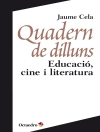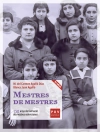This volume brings together recent research and commentary in secondary school mathematics from a breadth of contemporary Canadian and International researchers and educators. It is both representative of mathematics education generally, as well as unique to the particular geography and culture of Canada. The chapters address topics of broad applicability such as technology in learning mathematics, recent interest in social justice contexts in the learning of mathematics, as well as Indigenous education. The voices of classroom practitioners, the group ultimately responsible for implementing this new vision of mathematics teaching and learning, are not forgotten. Each section includes a chapter written by a classroom teacher, making this volume unique in its approach. We have much to learn from one another, and this volume takes the stance that the development of a united vision, supported by both research and professional dialog, provides the first step.
Inhoudsopgave
Front matter.- Series Preface (Gabriele Kaiser and Bharath Sriraman).- Preface. A northern vision of mathematics education (Ann Kajander, Jennifer Holm and Egan J. Chernoff).- Foreword (Edward Doolittle).- Part I. The Changing Landscape of Teaching and Learning Mathematics.- Part I preface. On changing the landscape: Ecclesiastes vs. Heraclitus (Rina Zazkis and Nathalie Sinclair).- Part I preface (Walter Whiteley).- Powerful stories: The hitchhiker’s guide to the secondary mathematics curriculum landscape (Peter Taylor, Divya Lala, Kariane Ouellet, and Stefanie Knebel ).- On teaching and learning mathematics from a cultural-historical perspective (Luis Radford, Isaias Miranda, and Gilbert Lacroix).- Indigenous perspectives in school mathematics: From intellect to wisdom (Glen Aikenhead).- Live(d) topographies: The emergent and dynamical nature of ideas in secondary mathematics classes (Jennifer S. Thom and Florence Glanfield).- Drawing upon Indigenous knowledges to transform the secondary mathematics classroom (Lisa Lunney Borden).- A teacher’s view It’s a path, not a gap: A relationship-based approach to math and well-being (Tom Boland and David Tranter).- Part I commentary. The changing landscape of teaching and learning mathematics (Luckson M. Kaino (South Africa).- Part II. Shifting to a culture of inclusion .- Part II preface. The particular, the generic and the general once more:.- Looking into aspects of Canadian mathematics classrooms (David Pimm).- Steps toward a more inclusive mathematics pedagogy (Brent Davis, Jo Towers, Rohan Karpe, Michelle Drefs, Olive Chapman, and Sharon Friesen).- Learning mathematics when students are new to schooling and new to English (Richard Barwell, Kathryn Kubota-Zarivnij, and Debbie Culotta).- Introduction to students at risk: Case studies of often unheard students (Ann Kajander).- Building capacity in grade 9 mathematics: Case studies from a Collaborative Inquiry Project in Applied level mathematics (Douglas Mc Dougall and Sue Ferguson).- Success in Grade 9 Applied mathematics courses (Alison Macaulay).- Reflecting on good mathematics teaching: Knowing, nurturing, noticing (Susan Oesterle).- Mathematical mindsets for the teaching and learning of mathematics (Jamie S. Pyper).- Considering Indigenous perspectives and mathematics education: Stories of our experiences as teachers and teacher educators (Gladys Sterenberg and Kevin O’Connor).- A teacher’s view.- An unexpected adventure (Jarron Childs and Jennifer Holm).- Part II commentary.- Shifting to a culture of inclusion (Kim Beswick (Australia)).- Part III: Fostering Relationships .- Part III preface. Building relationships through an ethic of care: Insights from the work of Julie Long (Elaine Simmt).- Culturing affect, affective cultures ( Wolff-Michael Roth).- Support to thrive: Raising resilience in students in secondary schools (Kingsley Hurlington).- Digital technology in teaching mathematical competency: A paradigm shift (Sean Chorney).- Considering both academic and social domains: Increasing student engagement in at-risk classrooms (Limin Jao).- A teacher’s view.- My favourite mistakes: Experiences teaching Cree students in northern communities (Michael Newell).- Part III commentary.- Fostering relationships in the work of teaching mathematics (Reidar Mosvold (Norway)).- Part IV: Enhancing Problem-based learning .- Part IV preface .- Enhancing problem-based learning (Tom Kieren).- Building thinking classrooms (Peter Liljedahl).- Teaching mathematics and developing citizenship: How to use contexts to enhance problem-based learning (Annie Savard).- Teaching probability in junior high school through problem solving: Construction and analysis of a probabilistic problem (Vincent Martin, Izabella Oliveira, and Laurent Theis ).- Bottles and bridges: Sample classroom tasks created by beginning teachers (Abrahim Abu Atiya, Natasha Luca, and Ann Kajander).- Promoting students’ reasoning about statistical inference through engagement with a problem-based instructional activity involving the use of Tinker Plots© software (Luis Saldanha and Mathieu Thibault).- Supporting mathematical creativity through problem solving (Richard Hoshino).- Exploring math through social justice context problems (Ami Mamolo, Kevin Thomas, and Michael Frankfort).- Social justice and the teaching and learning of mathematics (Gale Russell ).- A teacher’s view.- Problem solving in the secondary classroom (Shawn Godin).- Part IV commentary.- Developing mathematical reasoning through problem solving (Roza Leiken (Israel)).- Part IV commentary.- Doing is not the same as thinking or construing (John Mason (United Kingdom)).- Part V: Planning and Assessment .- Part V preface.- Planning and assessment: Teachers and students as central actors (Carolyn Kieran).- Planning a unit by starting with the end it mind: Unit and lesson planning (Jennifer Holm).- Observing for mathematical proficiency in secondary mathematics education(Priscila Dias Corrêa).- Re-framing testing to better fit within problem solving classrooms: Ways to create and review tests (Tina Rapke, Jennifer Hall, and Richelle Marynowski).- Enhancing mathematics teaching and learning through sound assessment practices (Christine Suurtamm).- Improving students’ approaches to learning high school mathematics (P. Janelle Mc Feetors ).- A teacher’s view.- Assessment: Broadening our conceptions to improve our practice (Jimmy Pai).- Part V commentary.- Planning and assessment from a South African perspective (Vijay Reddy (South Africa)).- Part V commentary .- On measures of measurement and mismeasurement: A commentary on planning and assessment (Bharath Sriraman (The United States of America)).- Part VI: Broadening mathematical understanding through content.- Part VI preface.- Broadening mathematical understanding through content (Gila Hanna).- “Canada is better” – An unexpected reaction to the order of operations in arithmetic (Rina Zazkis).- Modelling in mathematics education: Moving beyond curve fitting exercises (France Caron).- Learning algebra with models and reasoning (Ann Kajander).- In no uncertain terms: Encouraging a critical stance toward probability in school (Nat Banting, Ilona Vashchyshyn, and Egan J. Chernoff).- Composition of linear polynomials (Edward J. Barbeau).- Transition from secondary to tertiary mathematics.- Culture shock: Mathematical symbols, language, and reasoning (Andrijana Burazin and Miroslav Lovric).- A teacher’s view.- Teaching a university bound statistics course (Jeff Gardner).- Part VI commentary.- Broadening mathematical understanding through content (Plinio Cavalcanti Moreira (Brazil)).- END MATTER.- Final commentary: The challenge continues (Jennifer Holm, Ann Kajander, and Egan J. Chernoff).- INDi CES.-
Over de auteur
Dr. Ann Kajander is an Associate Professor of Mathematics Education in the Faculty of Education at Lakehead University, Canada. She has also taught mathematics at both the secondary and post-secondary levels, and developed the Kindermath elementary enrichment program. Her recent book,
Mathematical Models for Teaching, supports the development of specialized mathematics knowledge for teachers. Ann was also the co-editor of
The Mathematical Education of Elementary Teachers. She sits of the Advisory Editorial Boards of the
International Journal of Science, Mathematics, and Technology Education and the
Journal of Global Education and Research. Ann is the 2014 winner of the Margaret Sinclair Memorial Award for Excellence and Innovation in Mathematics Education, a Canadian national-level award.
Dr. Jennifer Holm is an Assistant Professor of Mathematics Education in the Faculty of Education at Wilfrid Laurier University, Canada. Her research on using professional learning groups to support teachers, in particular those who are working with the transition from elementary to secondary school, was recently published in a book, Improving mathematics teaching through professional learning groups. She serves on the Steering Committee for the Psychology of Mathematics Education, North American Chapter. Jennifer is currently the editor of the Proceedings for the Annual meeting of the Canadian Mathematics Education Study Group. She received the Recognition Award for Theses and Dissertations on Teacher Education from the Canadian Association for Teacher Education in 2014 for her doctoral work. Dr. Egan J Chernoff is an Associate Professor of Mathematics Education in the College of Education at the University of Saskatchewan, Canada. (At the time of publication) Egan is the English/Mathematics editor of the Canadian Journal of Science, Mathematics and Technology Education(an associate editor of the
Statistics Education Research Journal and the Book Reviews Editor of
The Mathematics Enthusiast). He sits on the Board of Directors
for the learning of mathematics; is an editorial board member for
The Variable: Periodical of the Saskatchewan Mathematics Teachers’ Society and
Vector: Journal of the British Columbia Association of Mathematics Teachers; and, is the former editor of
vinculum: Journal of the Saskatchewan Mathematics Teachers’ Society. Follow him @Matthew Maddux.












